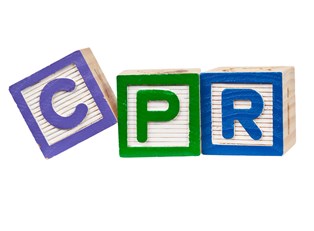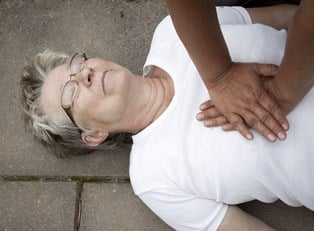CPR can triple a cardiac arrest victim’s chance of survival, but unfortunately many times bystanders are unsure of what to do in these situations. Some are afraid that if they lack the adequate training they can actually make things worse, but it’s important to realize that in an emergency situation, any attempt at resuscitation has the potential to save a life. There are two primary forms of CPR: conventional and hands-only. While they are very different techniques, both can mean the difference between life and death for someone who has suffered cardiac arrest. Here’s a quick look at what each of these methods entails.
Conventional
Conventional CPR should only be attempted by someone with official training. The American Heart Association recommends that all others stick with the hands-only method. Before you begin with either, check to see if the victim is unconscious—shake their shoulders and ask if he or she is okay. If the victim is unresponsive, call 911 and then begin administering conventional CPR.
Begin by performing 30 chest compressions at 100 beats per minute. If the person is still unresponsive after 30 compressions, attempt to clear the airway. This is done by gently tilting the head back while you lift the chin forward. Wait five to ten seconds after this to check for signs of breathing like movement in the chest or the sounds of breath. If you’re unable to detect breathing, move on to mouth-to-mouth breathing. This involves two one-second rescue breaths. If the victim is still unconscious after the rescue breaths, begin the cycle again with chest compressions. Use the acronym “CAB”—circulation, airway, breathing—to help you remember the order in which you should perform these actions.
Hands-Only
As with the conventional method, you should begin hands-only CPR by checking to see if the victim is responsive. If not, call 911 and begin chest compressions at 100 beats per minute. Unlike conventional CPR, hands-only requires no mouth to mouth contact. This technique is recommended for situations in which a person has suddenly collapsed, but hands-only CPR is not ideal for treating infants, children, or drowning victims.
Even though the hands-only method is less involved than the conventional method, studies have shown that it is just as effective. According to studies published by the New England Journal of Medicine, the survival rates for both methods were roughly equal. The researchers did, however, point out that victims treated with conventional CPR were more likely to survive without brain damage than those treated with the hands-only method. Regardless, it should be stressed that doing something is much better than doing nothing at all.



